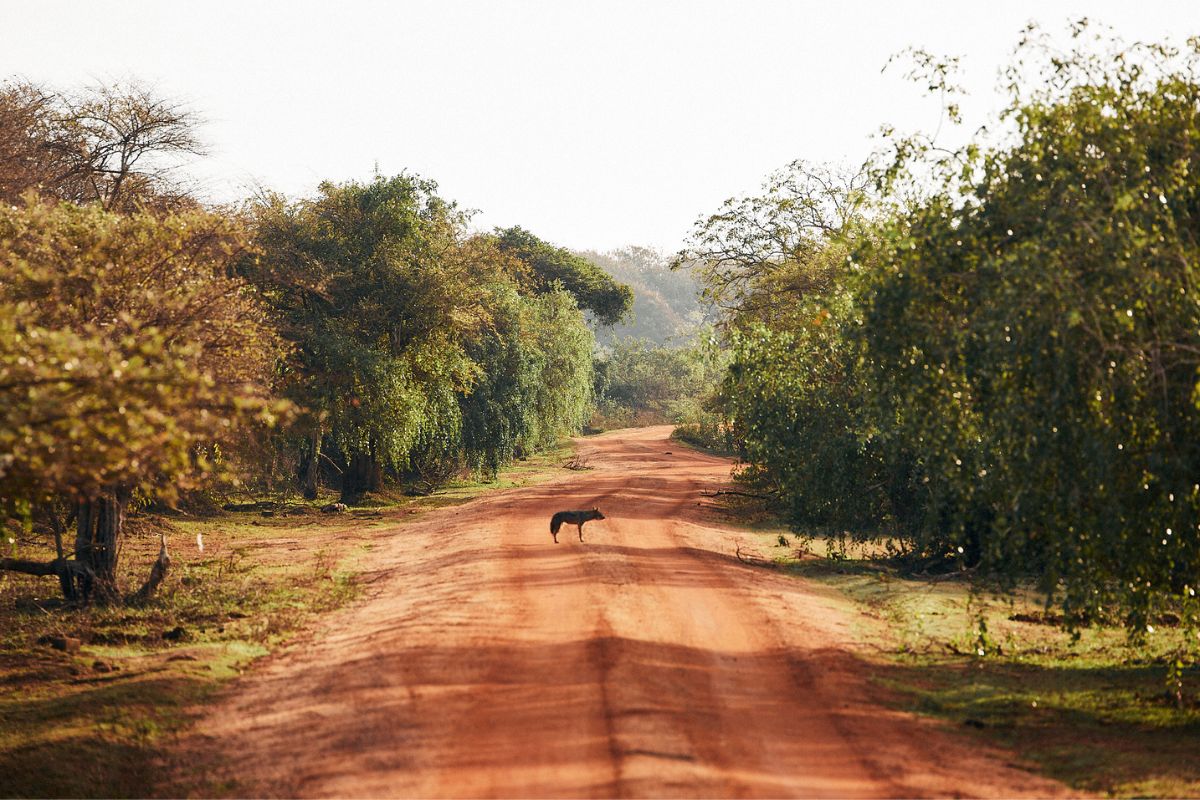- 20 June 2023
A guided game drive at the Yala National Park offers a remarkable opportunity to witness wildlife up close. A crucial aspect of a game drive is the expertise and skills of the safari rangers, particularly their ability to interpret nature and provide insightful information about animal sightings and behaviour.
A guided game drive at the Yala National Park offers a remarkable opportunity to witness wildlife up close. A crucial aspect of a game drive is the expertise and skills of the safari rangers, particularly their ability to interpret nature and provide insightful information about animal sightings and behavior.

Understanding Animal Behaviour
Experienced safari rangers possess in-depth knowledge about the behaviour of various animal species. They can interpret the subtle cues and actions exhibited by animals, providing a valuable outlook into their social dynamics and interactions. For instance, when observing elephants, rangers may explain that when a subordinate male turns his back to a larger, dominant male, it is a display of submission, indicating respect for the higher-ranking individual.
Identifying Vocalisations
Animals communicate through a variety of vocalisations, and rangers are skilled at recognising and interpreting these sounds. They can explain the meaning behind different calls, roars, grunts, or alarm cries. For example, rangers might point out that the distinctive trumpeting sound of an elephant serves as a warning signal to alert the herd of potential danger.
Reading Body Language
Animals often convey messages through their body language, and rangers are adept at deciphering these signals. They can explain how certain postures, movements, or gestures reflect an animal’s mood, intentions, or social status. For instance, a ranger might note that when a leopard curls its tail tightly around its body, it is a sign of aggression or discomfort.
Recognising Signs and Tracks
Safari rangers are trained in tracking and can identify signs left by animals, such as footprints, droppings, and marks on trees or vegetation. They can interpret these signs to determine the presence of certain species, their recent activities, and even the direction they are moving.
Sharing Ecological Knowledge
In addition to animal behaviour, rangers possess a wealth of knowledge about the park’s ecosystem and its intricate connections. They can provide information on the interdependence between different species, the importance of certain plant species for specific animals, and the overall balance of the ecosystem. For example, rangers may explain how the presence of certain bird species in an area indicates the presence of specific prey species.
Morning vs Afternoon Game Drive
Both experiences can be quite different due to several factors, including timing, wildlife activity, lighting conditions, and overall atmosphere of the park.
Morning Game Drive (5:30 a.m.)
Wildlife Activity
In the early morning, wildlife is generally more active as they emerge from their nighttime resting places. Animals such as leopards, elephants, and sloth bears are often seen during these hours as they search for food or engage in their daily routines. It’s a prime time for predator sightings, as they may still be active from the previous night.
Lighting Conditions
The subtle, golden hue of the early morning creates a magical ambiance and enhances the beauty of the surroundings. It offers great opportunities for photography, with gentle light casting a warm glow on the landscape and wildlife. The morning light can also highlight intricate details and textures, adding depth to the overall visual experience.
Cooler Temperatures
Morning game drives often provide a more comfortable climate as temperatures are cooler compared to the midday heat. This can be particularly pleasant during hot seasons, allowing guests to enjoy the safari without the discomfort of high temperatures.
Serene Atmosphere
The early morning hours offer a tranquil and peaceful atmosphere in the park. The sounds of nature, such as bird song and the rustling of leaves, are more pronounced during this time. Guests are able to savour the serene ambiance and enjoy the uninterrupted beauty of the surroundings.
Afternoon Game Drive (3:00 p.m.)
Wildlife Behaviour
As the day progresses, some animals may seek shelter or rest during the heat of the afternoon. However, certain species, such as elephants and birds, remain active throughout the day. Guests may observe different behaviours during the afternoon, such as animals seeking shade or cooling off in watering holes.
Lighting Conditions
The afternoon light casts a warm and vibrant glow over the landscape, creating stunning colours and contrasts. Although the lighting may not be as soft as in the morning, it offers its own unique beauty for capturing photographs and appreciating the surroundings.
Cooler Temperatures
Compared to the midday heat, the late afternoon can bring relief from the sun’s intensity. As the day begins to wind down, temperatures become more comfortable, creating a pleasant atmosphere for enjoying the game drive.
Both morning and afternoon game drives have their own distinct charm and offer unique opportunities for wildlife sightings and experiences. The choice between the two depends on personal preferences, the specific wildlife one hopes to encounter, and the desired lighting and atmospheric conditions. Many safari enthusiasts opt to experience both morning and afternoon game drives during their stays at Wild Coast Tented Lodge to maximise their chances of observing a wide range of wildlife behaviours and enjoying the different moods of Yala National Park throughout the day.
Written by Thilanka Bodhikotuwa

Extended Stay Savings
Extend your stay for 6+ nights at Cape Weligama, save more and enjoy the holiday of a lifetime.



















